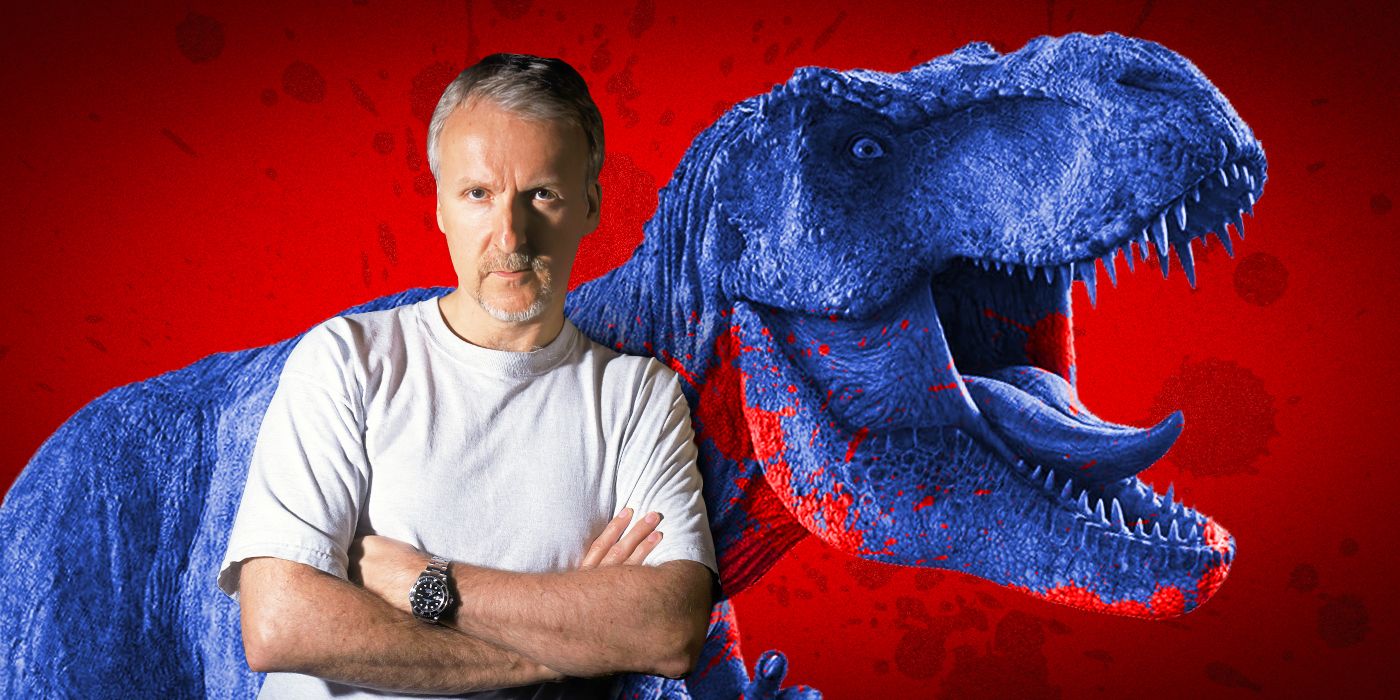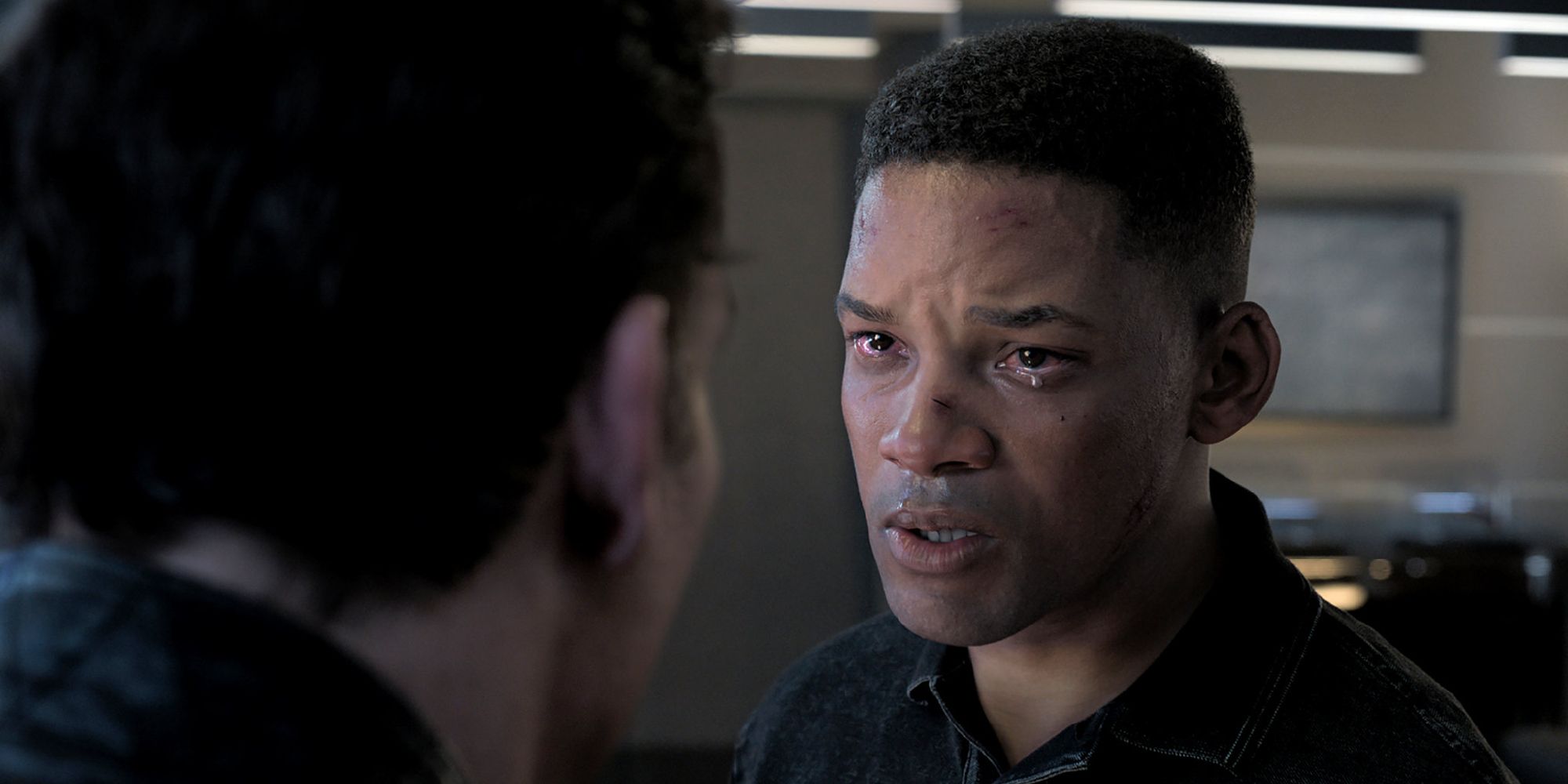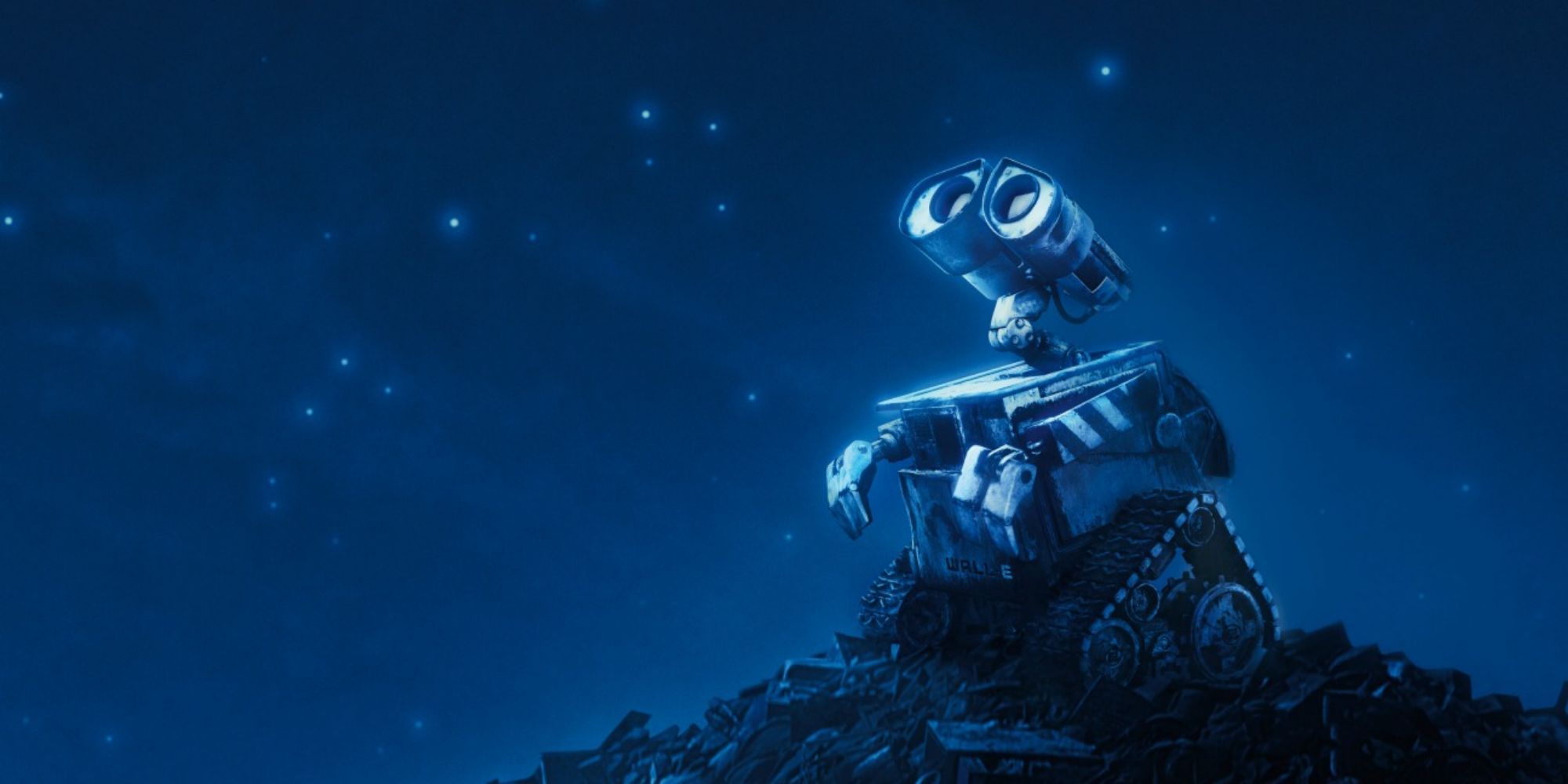The Big Picture
- High frame rate projection is a nuisance in narrative films, preventing viewers from fully enjoying the visuals and creating a barrier between the viewer and the screen.
- Alternating between frame rates within the same scene in Avatar: The Way of Water is jarring and distracting, diminishing the impact of intimate conversations and other key moments.
- High frame rates and excessive lighting can make movies look sterile, with a lack of complexity and warmth that doesn’t align with the intended tone or themes of the story. Imperfections in cinematography make movies feel more realistic and grounded.
Seeing Avatar: The Way of Water on a massive screen was a joyous experience. The cool ocean imagery, stunning colors, and crisp cinematography all just looked tremendous projected on a canvas as big as my imagination. Watching the newest Pandora adventure unfold, I truly felt the hype over what kind of visuals The Way of Water could deliver had been fulfilled…except for one glaring problem that was instantaneously recognizable. As the movie began, the 20th Century Studios logo was moving awfully fast. Alarmingly so.
“Oh no,” I murmured in my seat. This wasn’t just a premium 3D viewing of The Way of Water. Those speedy logos were an indication that I’d stumbled into a screening of James Cameron’s latest directorial effort projected at 48 frames per second. All the beauty on-screen was frequently held back in its impact by this choice, and it’s just the latest example of high frame rate projection being a total nuisance in narrative films.
Avatar: The Way of Water
Jake Sully lives with his newfound family formed on the extrasolar moon Pandora. Once a familiar threat returns to finish what was previously started, Jake must work with Neytiri and the army of the Na’vi race to protect their home.
- Release Date
- December 16, 2022
- Director
- James Cameron
- Runtime
- 192 minutes
- Studio
- 20th Century Studios
What is High Frame Rate projection?
Understandably, many reading this may not know what high frame rate (or 48 frames per second) projection is. Typically, movies are projected and shown in 24 frames per second. According to Masterclass, though very early movies alternated between other forms of projection (like 16 frames per second), eventually, 24 frames per second was chosen because it’s “the lowest frame rate required to make motion appear natural to the human eye.” It appears the decision to make filming and projecting features at 24 fps the norm coincided with the introduction of sound cinema, thus ensuring that two default elements of filmmaking were established by the end of the 1920s.
While 24 fps has been the standard for shooting and showing movies for nearly a century now, there have been variations on this format over the years. Initial forays into shooting with digital cameras and camcorders resulted in a handful of movies being shot at higher frame rates, such as the 1994 documentary Hoops Dream, though most of these projects were projected at 24 fps in their general theatrical runs. In 2012, Peter Jackson threw down the gauntlet by shooting and releasing The Hobbit: An Unexpected Journey in a 48 frames per second format, with its two sequels also captured in this manner. Previously, indies and documentaries had dipped their toes into being shot at higher frame rates. Suddenly, some of the biggest fantasy movies of all time were challenging the 24 fps norm.
It was a massive move on several fronts, including how prolific this test of newfound technology was while Jackson’s status as a visual effects trailblazer made it seem like this could be a major step towards legitimacy for 48 fps. The advantage for Jackson in pursuing this format, per his own words, was that he saw it as a way of enhancing the realism of the on-screen image. This and other pro-high frame rate sentiments, including that it makes 3D photography look more crisp, have been echoed by other filmmakers who have dabbled in the format, like Ang Lee and James Cameron. All due respect to these legends of cinema, but in its current form, high frame rate is a disaster for narrative features.
The Problems With High Frame Rate in ‘Avatar: The Way of Water’
When you’re watching an Avatar movie, you want to be able to soak in all the tiniest details of Pandora. Your eyes dart to the coolness of the water or critters lurking in the trees in the background. Unfortunately, the high frame rate makes that often impossible to do. Scenes that should be soaring, depicting Jake (Sam Worthington) and Neytiri (Zoë Saldaña) flying through the sky on their Banshees instead look weirdly rushed when filtered through the 48 fps shooting style. Tense fights between digital characters that should function as compelling battles between good and evil only register as moving at an awkwardly speedy pace. The world of Pandora should be an immersive realm in how it’s presented to people. Captured in high frame rate, The Way of Water instead creates a barrier between the viewer and what’s on-screen.
Now, one might think that your eyes would just eventually get used to high frame rate shooting after 191 minutes, the same way one might not notice 3D after 10 or so minutes. That could be true under some circumstances, but not with The Way of Water. Most of the movie is captured in the high frame rate format, but the rest of the film is captured in the traditional 24 fps. Bizarrely, this decision means that we alternate between frame rates within the same scene. An intimate conversation between Jake and Neytiri can go from being seen at 24 fps in one shot to being depicted at 48 fps in the very next shot. The shift between the two formats is always jarring and distracting. It’s just another instance where The Way of Water’s high frame rate is a problem rather than an enhancement.
Ang Lee Shot ‘Billy Lynn’s Long Halftime Walk’ and ‘Gemini Man’ at 120 Frames per Second
But Avatar: The Way of Water, at least, doesn’t suffer from a severe problem that plagued the works of Ang Lee captured in high frame rate. For his most recent films, Billy Lynn’s Long Halftime Walk and Gemini Man, Lee wasn’t just shooting at 48 fps, he was filming his works at 120 frames per second (only a handful of movie theaters on the planet are capable of projecting at 120 fps, most theaters showed these titles at 48 fps). Shooting at a higher frame rate requires more lighting. Gaffer Jarred Waldron of Halftime Walk noted that “We needed at least 2.5 times the amount of light we would normally need on a picture” to shoot this movie at 120 fps.
The result is that Halftime Walk and Gemini Man both look terrible as movies, especially the former, which often has a sterile look that makes every scene, regardless of the intended tone, look like something more akin to a Swiffer commercial. The high frame rate process just makes the characters move a little faster on-screen, rather than making this distracting lighting choice look interesting. What’s extra strange is both movies, again, especially Halftime Walk, are aiming for realism. These aren’t works meant to occupy a heightened visual space, where an abundance of lighting could’ve been turned into a positive or a unique attribute meant to accentuate a distinctive visual landscape. A nightmarish landscape intentionally designed to eschew reality from a filmmaker like Panos Cosmatos or David Lynch could’ve utilized this lighting exquisitely.
Instead, scenes of emotional intimacy in Halftime Walk look cold and off-putting. It all looks too pristine, and not in a way that feels intentional or like it feeds into the themes of the story. Gemini Man has a little more complexity in its lighting, but it still looks too clean and brightly lit for its own good, especially given the shockingly somber tone of the film. Lee is really committed to high frame rate, to the point that he told Polygon he has trouble watching movies projected or shot in 24 frames per second. Unfortunately, all that dedication is towards a technology that isn’t quite working yet. The high frame rate is a nuisance in both of his recent directorial efforts, while the lighting choices made to make shooting at 120 fps possible have ensured that watching these films even at 24 fps will be a tedious experience.
Imperfections Make Movies Feel More Realistic
In a featurette on the home video release of WALL-E, famed cinematographer Roger Deakins is interviewed, since he went to Pixar Animation Studios for a bit to teach the animators the finer details of classical camerawork. Specifically, director Andrew Stanton and his team wanted to mimic the finer imperfections and intricacies of camerawork in animation, such as how lights in the background will turn into indistinguishable blobs if they’re shot with a certain lens, associated with landmark films from the 1970s. In talking about this, Deakins had to chuckle. He was aware that artists in countries like Germany had been working tirelessly to eradicate various imperfections in traditional camerawork for decades. To now have animators begging him to teach them how to replicate those imperfections on a computer was funny to him.
This featurette exemplifies, though, how supposed “shortcomings” of cinematography, gaffing, and other visual traits in cinema are so vital to this medium. 35mm film, for instance, may not produce an image that’s as “pristine” as one captured on digital cameras, but 35mm film captures a sense of lived-in reality that just makes your movie look so much more vivid and alive. Visual imperfections bring movies closer to who we are as people. Our lives, bodies, and experiences are not perfect. They’re full of bumps, creases, imperfections. Countless classic movies have reflected this beautifully in their camerawork. To see things slightly blurry in the frame or have shadows obscure parts of the frame, those details reflect the imperfections of reality.
1:29

The Dark R-Rated ‘Jurassic Park’ James Cameron Never Got To Make
Maybe no one would’ve made it out alive!
I don’t think acclaimed auteurs like James Cameron, Peter Jackson, and Ang Lee are unaware of this detail, nor is their obsession with high frame rates inexplicable. All three men are highly experienced filmmakers who’ve dedicated much of their lives to pushing the boundaries of visual effects techniques, even in smaller-scale dramas like Billy Lynn’s Long Halftime Walk. In their pursuits, they’ve encountered many obstacles that shooting at 48 frames per second or higher could, on paper, fix. In that interview with Polygon, Lee noted that his obsession with 120 frames per second shooting came from his frustration with strobing on the set of Life of Pi, while all three directors have expressed hope that high frame rates can make digital 3D look better.
Feature Filmmakers Should Avoid High Frame Rate Projection
Despite these admirable ambitions, though, high frame rate, 10 years after it was first employed on a major narrative feature with The Hobbit: An Unexpected Journey, isn’t getting any better. In fact, thanks to how The Way of Water alternates between 24 fps and 48 fps, it’s a format that’s only finding new ways to irritate moviegoers. As countless others have said, there’s a home for high frame rate filming in the world of certain documentaries, but even here, it’s doubtful this technique would be properly “immersive” for many titles. Did people walk away from watching Dick Johnson is Dead or Shirkers thinking it was desperately missing high frame rate? Come to think of it, not only did those documentaries excel even while being shown at 24 fps, but both projects carried an incredible level of emotional intimacy by maintaining the visual “imperfections” in the home video materials they each employed.
It’s always welcome to see filmmakers trying out new things for certain passages of their career (remember when Steven Soderbergh was only going to shoot movies on iPhones?) and artistic shortcomings shouldn’t prevent future experimentation. However, the current form of high frame rate just isn’t working for narrative movies. Even more distressing, the methods needed to make shooting movies at 120 fps possible are actively making certain features look terrible even when they’re shown at 24 fps. Perhaps another incarnation of this projecting and filming format will work better, but the modern incarnation of high frame rate is a disease that major filmmakers need to get out of their systems immediately.
Avatar: The Way of Water is available to stream on Disney+ in the U.S.
WATCHING ON DISNEY+






